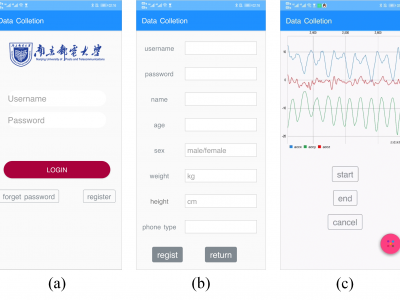Wearable Sensing

Any work using this dataset should cite this paper as follows:
Nirmalya Thakur and Chia Y. Han, "Country-Specific Interests towards Fall Detection from 2004–2021: An Open Access Dataset and Research Questions", Journal of Data, Volume 6, Issue 8, pp. 1-21, 2021.
Abstract
- Categories:
 1955 Views
1955 Views
Objective: Analyzing human motion is essential for diagnosing movement disorders and guiding rehabilitation for conditions like osteoarthritis, stroke, and Parkinson's disease. Optical motion capture systems are the standard for estimating kinematics, but the equipment is expensive and requires a predefined space. While wearable sensor systems can estimate kinematics in any environment, existing systems are generally less accurate than optical motion capture.
- Categories:
 606 Views
606 Views This dataset is in support of my Research paper 'Detection of Pancreatic,Ovarian & Prostate Tumor, Cancer and Treatment by Ablation'.Due to computer crash, all work, datasets and old papers lost. Re-work may be submitted.
For Machine design, pls refer, open-access page 'Data and Designs of B-Machines'
- Categories:
 1082 Views
1082 ViewsThis dataset consists of measurements from a foot-mounted inertial measurement unit (IMU). In total, we provide data from five different test subjects travelling over more than 7.6 km. The data are combined with various forms of ground truth positioning information that can be used to evaluate the accuracy of a zero-velocity-aided, foot-mounted inertial navigation system (INS).
- Categories:
 1769 Views
1769 ViewsDataset I mainly consists of 30 subjects, which are respectively composed of gait data collected by mobile phone placed on arm, wrist, hand, waist, and ankle. This dataset is used to verify the impact of the mobile phone's placement on the recognition effect. Dataset II and Dataset III are composed of 113 subjects. Dataset II is the data collected from a mobile phone placed in the hand position, while Dataset III is the gait data collected from a mobile phone placed in the waist position. These two data sets are used primarily to verify the identification effect of the proposed model.
- Categories:
 492 Views
492 Views
Dataset I mainly consists of 30 subjects, which are respectively composed of gait data collected by mobile phone placed on arm, wrist, hand, waist, and ankle. This dataset is used to verify the impact of the mobile phone's placement on the recognition effect. Dataset II and Dataset III are composed of 113 subjects. Dataset II is the data collected from a mobile phone placed in the hand position, while Dataset III is the gait data collected from a mobile phone placed in the waist position. These two data sets are used primarily to verify the identification effect of the proposed model.
- Categories:
 173 Views
173 Views
Dataset I mainly consists of 30 subjects, which are respectively composed of gait data collected by mobile phone placed on arm, wrist, hand, waist, and ankle. This dataset is used to verify the impact of the mobile phone's placement on the recognition effect. Dataset II and Dataset III are composed of 113 subjects. Dataset II is the data collected from a mobile phone placed in the hand position, while Dataset III is the gait data collected from a mobile phone placed in the waist position. These two data sets are used primarily to verify the identification effect of the proposed model.
- Categories:
 Views
Views
The uploaded data are for the paper: "A Wearable Skin Temperature Monitoring System for Early Detection of Infections". Baseline kin temperature measurement data from all 5 volunteers (subjects) who wore the wearable band for 3-5 days are included along with 5-day temperature measurement data with anomalies of one volunteer who wore both the smart band and a heating pad. Augmented data generated using the methods described in the paper for COVID-19 infection anomaly detection are also included
- Categories:
 637 Views
637 Views



